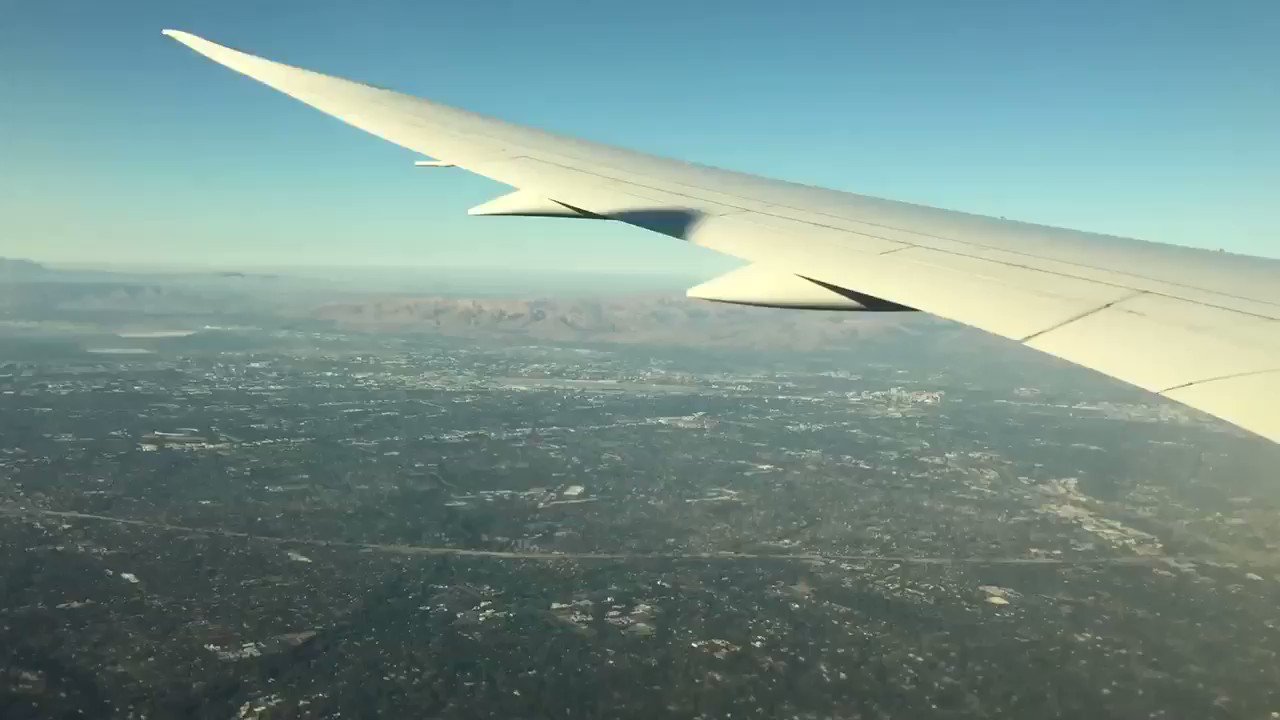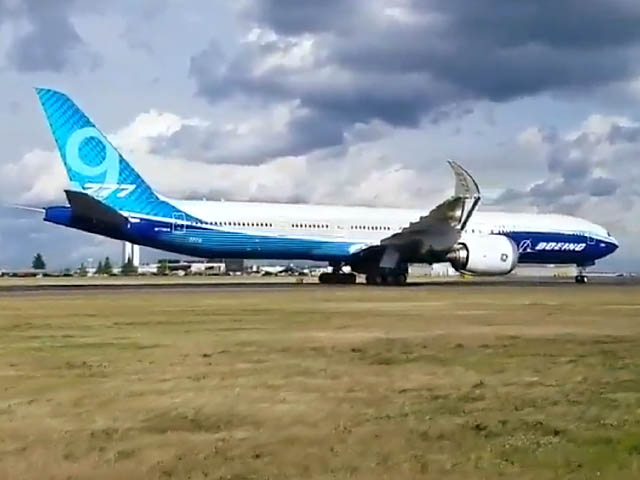777x Livestream
Boeing finalized its basic design for its 777X airliner, which has huge, folding wings and is on track to be the world's largest twin-engine jet in 2020.

- Jan 25, 2020 Livestream here: Boeing will try to fly the 777X at 1o a.m. The plane sat on the runway 3 hours through rain and wind before aborting its planned Friday flight.
- The first flight of the amazing Boeing 777X!!
Boeing Co. took a $6.5 billion charge on its all-new 777X jetliner as the company posted a record annual loss on Jan. 27 because of the coronavirus pandemic and in the aftermath of the two-year safety crisis that followed fatal crashes of its 737 MAX.
The results cap a tumultuous year for the world’s largest aerospace company during which the pandemic erased demand for the industry’s largest jetliners, just as Boeing fights to emerge from the nearly two-year grounding of its best-selling 737 MAX.
Boeing said it now expects the 777X, a larger version of the 777 mini-jumbo, to enter service by late 2023, three years later than initially planned, with a longer and costlier certification process, after scrutiny over the 737 MAX.

Boeing is making “prudent design modifications” to the 777X, including hardware changes to the actuator control electronics, in response to regulator expectations, Chief Executive Officer Dave Calhoun told analysts.
“2020 was a historically challenging year for our world,” he said.
Inventory
Calhoun said Boeing has sufficient liquidity to manage the downturn but sounded a note of caution on the smoothness of vaccine distribution and an early summer rebound in air travel.

The historic slump in air travel and expanded inspections over production defects has halted deliveries of some 80 787s to airlines so far, cutting off a key source of cash and raising the prospect of a reach-forward loss as Boeing works to clear an inventory of about 450 737 MAX jets.
Boeing said it expects to resume handing over 787s to customers later this quarter, with none in January and few in February, though analysts say deliveries are not expected to recover to 2019 levels until at least 2024.

The company reaffirmed plans to hit a sharply-reduced production rate of 5 787s per month in March, when it will consolidate production at its South Carolina factory, a decision first reported by Reuters.
Boeing, which has delivered some 40 737 MAXs from its stored inventory, is also sticking with plans to reach a production rate of 31 737 jets per month by the beginning of 2022, though at least one analyst expects that to slip to early 2023.
The European Union Aviation Safety Agency (EASA) lifted its own 22-month 737 MAX flight ban on Jan. 27, as did Britain’s Civil Aviation Authority (CAA), following a move by U.S. counterparts in November and Brazil and Canada afterward.
China, which was first to ban the plane after the second crash in March 2019 and which represents a quarter of MAX sales, hasn’t said when it will act.
Even so, Boeing said on Jan. 27 it expects to win remaining 737 MAX regulatory approvals in the first half of 2021.
Boeing 777x Live Stream
Demand from China also been curbed by years of trade tensions between Washington and Beijing, though industry sources have expressed cautious hope for a revived deal now President Joe Biden is in office, following a pattern of government-brokered Chinese jet orders coinciding with transfers of power or diplomatic resets.
Calhoun earlier told CNBC he was “optimistic” about new big plane orders from China, although industry sources have cautioned that demand remains thin despite Chinese traffic rebounding more quickly than elsewhere.
Boeing unveiled $8.3 billion in operating charges on Wednesday, including a $468 million charge for abnormal 737 production costs, $275 million over KC-46 aerial refueling tanker production issues, and $744 million linked to its 737 MAX settlement with the U.S. Department of Justice over a fraud conspiracy charge.
The company’s net loss rose to $8.44 billion in the fourth quarter ended Dec. 31, from $1.01 billion a year earlier, taking its full-year loss to a record $11.94 billion.
Revenue fell 15 percent to $15.30 billion in the quarter.
By Eric M. Johnson and Ankit Ajmera
777x Live Stream
Boeing Co.’s newest plane is preparing to spread its gargantuan wings—so long the tips are hinged—and rumble into the skies over the Washington factory complex constructed a half century ago for the original jumbo jet.
First flights typically mark a crowning technological achievement for planemakers, capping years of invention and problem-solving. This flight, however, will be clouded with uncertainty for Boeing.
The 777-9 is the planemaker’s first new model since two fatal crashes led to the global grounding of its 737 Max. As the company works to restore its reputation for safety and technical prowess, the new aircraft will face heightened scrutiny from regulators, airlines and investors.
Safety aside, there’s concern that the jetliner is simply too big for today’s airlines. The -9 is longer than Boeing’s iconic humpbacked 747 and is the first twin-engine jet built to haul a similar load of travelers—426 people in a typical two-cabin layout. It’s also the company’s priciest airplane, available for a cool $442.2 million before customary discounts.
But sales have stalled since an initial order flurry when the 777X was unveiled at the Dubai Airshow in 2013, and long-expected orders from China haven’t materialized amid trade tensions. “It is feeling like the plane is too big for most markets, for most airlines,” said George Ferguson, an aviation analyst with Bloomberg Intelligence.
The 777-9—the first model of the 777X family—is taking off into a turbulent market for aviation’s behemoths as the four-engine jets it was designed to replace fade into the sunset. Airbus SE is building the last of its A380 double-decker jets, while the future of Boeing’s 747 is very much in question with just 17 orders unfilled and a critical supplier shutting down production.
With 115 of the 777X still on order, Emirates accounts for more than half of Boeing’s total backlog. The long-haul carrier is also the largest customer for Airbus’s superjumbo. But as the A380 fades out of the global fleet over the next decade or so, it’s not a given that its operators will adopt the 777X to overcome congested hubs. For now, the trend is to bypass the industry’s biggest airports with smaller long-range jets.
“Most airlines that we’re dealing with are not interested in replacing [four-engine jets] with the largest twin-engine wide-bodies,” Steven Udvar-Hazy, chairman and founder of Air Lease Corp., said during a November earnings call. “Actually the trend is the other way,” he added, noting interest in smaller planes like Boeing’s 787 and Airbus’s A350.
The market may come around as the 777X takes flight and demonstrates its capability, however. It is an expensive airplane, Udvar-Hazy said, so airlines will likely wait and see how it performs before deciding on orders
The plane features stunning composite wings, the longest Boeing has ever built, with a span of 235 feet 5 inches (71.75 meters) when fully extended. The 777X will be instantly identifiable by its most distinctive feature: Hinges that flip the sculpted wingtips skyward for easier maneuvering around crowded taxiways.
While that design is a first for a commercial jetliner, it leans on concepts that have been around for about a century for military aircraft, said Mike Lombardi, Boeing’s corporate historian and archivist. The company’s F/A-18 Hornet, for instance, folds its wings to save space on carrier decks.
“It’s a very tried and true technology,” Lombardi said. “But I don’t think we’re going to be landing a 777X on a carrier deck any time soon.”
By Julie Johnsson